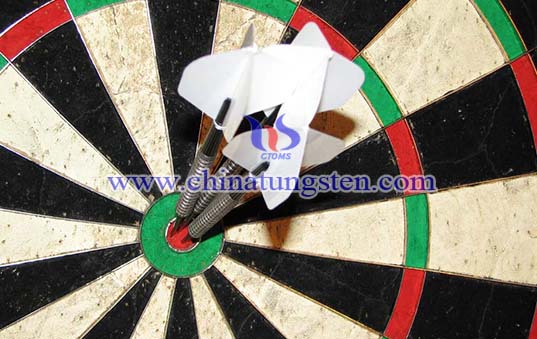This is a very simple yet fun game to play. It is very similar to the basketball game "Horse" (you may know that game under other names). It may be played by any number of players and is more fun with alot of people. This game is actually pretty boring with only two players.
The Object of Looper Dart Rule
To win the game you must be the last player to have any lives left.
The Scoring of Looper Dart Rule
Players names are written in any order down the left side of the scoreboard. Usually, a throw of one dart each at bullseye with the closet player throwing first and the furthest throwing last. After the first game, the first player to get knocked out plays first and so on. Three tallies are marked next to each name to indicate the number of lives left.
The Play of Looper Dart Rule
The first player throws one dart left-handed (or right-handed if that player is a lefty) to set a random target. Because the first player has no chance to lose a life, the random throw is used to give the second player a fair chance.
The EXACT wedge or bullseye the dart landed is marked on the scoreboard. If the dart lands in the 5 between the triple ring and the bullseye, you would mark "S5" to indicate the small wedge of the 5. If the dart landed in the triple 5, you would write "T5". If the dart landed in the 5 between the triple and the double rings, you would write "B5" to indicate the big wedge of the 5. If the dart landed in the double 5, you would write "D5".
The next player now must try to land a dart in the exact same wedge of the board. If that player is unsuccesful with all three darts, one life is erased and the next player has a chance.
If the player is successful in matching the wedge any darts remaining in hand may now be used to score a new target. If the target was hit with the third dart, the player pulls the darts and has all three to establish a new target. All three darts need not been thrown in a turn the player may stop at any time after the number was matched and the last dart thrown at the board is the new target. The player may not make a choice of the darts thrown, only the last dart counts. If the player misses the board with the last dart that can be thrown, a life is lost and the target remains at the previous one set.
For example, a player has to hit "S5" (the small wedge of the 5). With the first dart he hits the "S5". He now has two darts to set a new target. He aims at double bull ("D25") and hits it. He may now choose to sit down and not throw the third dart and leave the "D25". Let's say that, for some insane reason (maybe drunkeness), he decides to try for a double 18, and misses off the board. He now loses a life and the next player now must hit "S5". The next player now gets up and hits the "S5" on his third dart. He pulls his darts and throws his first dart and hits "T20" (triple 20). Satisfied, he sits down choosing not to throw the other two darts.
If a player sets a target and all other players fail to match the target, when it's that players turn again, no throw is neccessary. The player may choose to stay seated and keep the same target number. If the player chooses to risk trying a turn, the player MUST hit the target same as everyone else. If the player misses a life is lost just as if he did not set the number that stumped everyone else. It is usually wiser to just leave the number and not take the risk.
"So why do they call this 'Looper'?" The reason is that CLOSED loops of the numbers around the outside of the board count as valid targets! For example the loop that makes up the lower half of the number 6 is a target, however the upper hook of the 6 is not. These are written as "L", for example "L16" would meand the loop of the 16. The 8 and 18 each have two valid loops and which one is hit does matter. They would be notated as "UL8" for upper loop of the 8 or "LL8" for lower loop of the 8. As you can imagine loops are very hard to hit and are also very risky, if you miss slightly, you did not set a target number. However, if you do hit a loop, the other players have the difficulty of matching it.
Strategy of Looper Dart Rule
The only real strategy here is one of opportunity. If you hit the target number and have at least two darts to set a new one, try one dart at a loop. If you hit it sit down. If you don't, make sure you hit a new target even if it's an easy one with your last dart. Remember, hitting a big fat 16 and giving the next player an easy target is better than losing a life because your threw all your darts at a loop and missed or having a bounce-out with your last dart aiming for that double bull.





